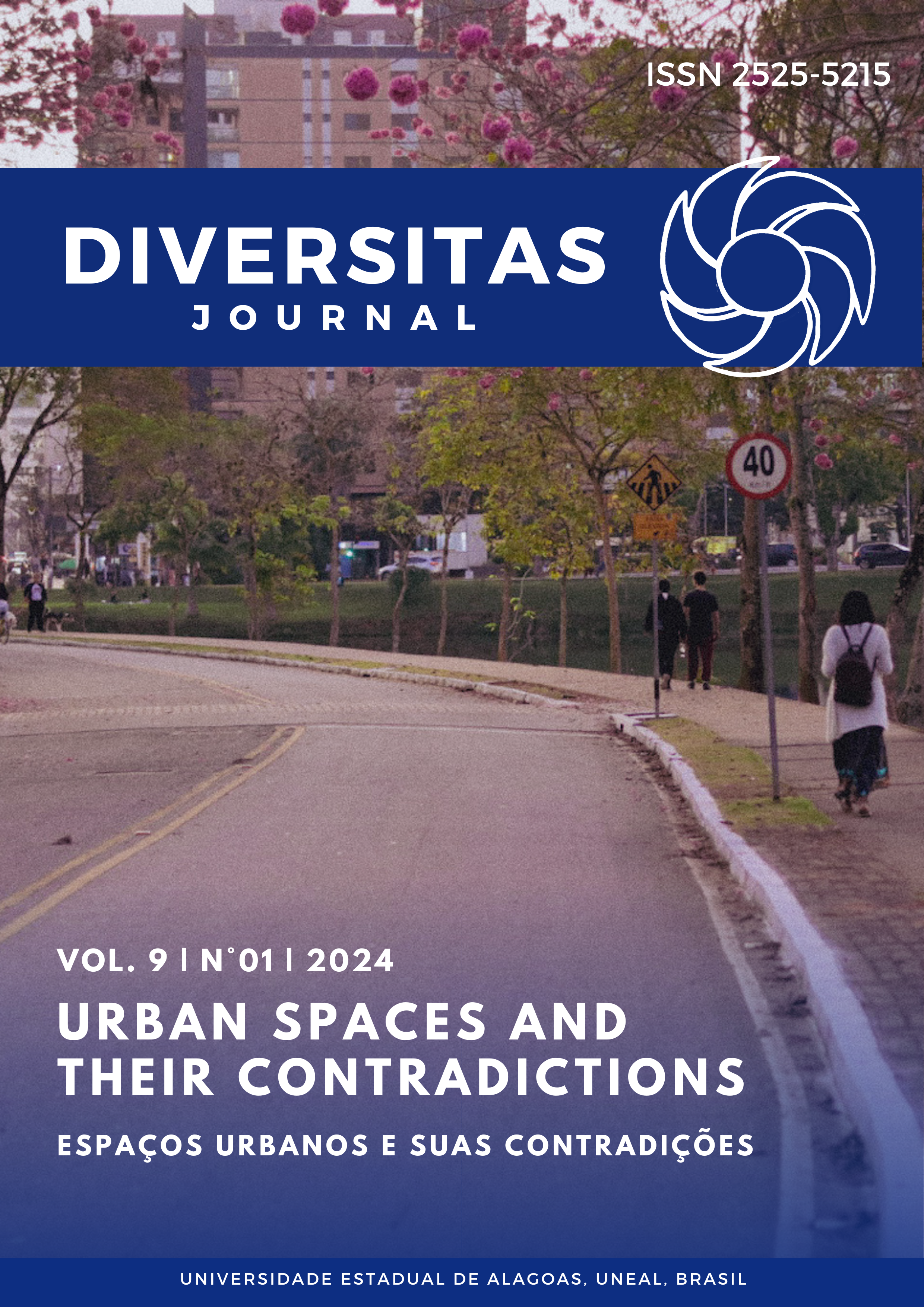ArcGIS in action
developing applications with an innovative platform
DOI:
https://doi.org/10.48017/dj.v9i1.2820Keywords:
Public Management, Assistive Technology, Low-codeAbstract
Constant technological progress has generated a growing need to acquire and consume new applications and it is this pursuit that has driven the demand for more efficient methods of development. Low-code is a rapid application development approach that allows for automated code generation through visual building blocks. ArcGIS Experience Builder is a powerful low-code tool for creating geospatial experiences. Survey123 is a tool that is also part of ArcGIS, designed specifically for creating custom forms. Sigabem is a project that aims to help people with disabilities access public transportation in the Metropolitan Region of Recife. To carry out this work, the students used both tools, taking advantage of their resources, to develop the two systems proposed for the project. Through what was made available, it was possible to achieve the idealized requirements and develop the necessary functionalities for the design of the applications. It became clear that the features of the ArcGIS platform contained a lot of value and contributed to the application development process. It is also expected to test the implemented functionalities with possible real users of both systems, making improvements as necessary in order to improve what has been developed so far.
Metrics
References
Alves, F. R., & Alcalá, S. G. S. (2022). Análise da abordagem LOW-CODE como facilitador da transformação digital em indústrias | Revista e-TECH: Tecnologias para Competitividade Industrial. Revista e-TECH: Tecnologias para Competitividade Industrial -ISSN-1983-1838. https://etech.sc.senai.br/revista-cientifica/article/view/1186
Barbosa, I. M. B. R. (2020). Inteligência geográfica para melhorar a acessibilidade de pessoas com deficiência. Projeto de pesquisa apresentado ao Edital CNPq N º 02/2020 -Bolsa de Produtividade em Desenvolvimento Tecnológico e Extensão Inovadora –DT. Edital CNPq N º 02/2020.
Frohmann, B. (1995). Taking information policy beyond information science: applying the actor network theory. In Annual Conference of the Canadian Association for Information Science v. (n.23), https://citeseerx.ist.psu.edu/document?repid=rep1&type=pdf&doi=40176306291e2cf81caecb4b6c9412853ae54031
Guimarães, J. C. de O., de Carvalho, V. S., da Silva, T. C. G., Ferreira, A. A., Barbosa, I. M. B. R., Bandeira, M. S., & Lima, A. S. C. (2021). Inteligência geográfica e tecnologia na contribuição ao acesso de pessoas com deficiência ao transporte públicono Recife / Geographic intelligence and technology in contributing to the access of people with disabilities to public transport in Recife. Brazilian Journal of Development, 7(2), 17187–17198. https://doi.org/10.34117/bjdv7n2-376
Horváth, B., Horváth, Á., & Wimmer, M. (2020). Towards the next generation of reactive model transformations on low-code platforms: three research lines. In Proceedings of the 23rd ACM/IEEE International Conference on Model Driven Engineering Languages andSystems: Companion Proceedings (pp. 1-10).
Martins, E. M., Fortes, J. D. N., Ribeiro, G. P., & Pereira, M. F. M.. (2014). Utilização de Sistema de Informação Geográfica como ferramenta para gestão do monitoramento da qualidade do ar na Região Metropolitana do Rio de Janeiro. Engenharia Sanitaria E Ambiental, 19(spe), 43–50. https://doi.org/10.1590/S1413-41522014019010001237
Rehkemper, G., & Song, J. (2022). Add Experience Builder Custom Widgets In ArcGIS Enterprise. Esri. https://www.esri.com/arcgis-blog/products/arcgis-enterprise/developers/add-experience-builder-custom-widgets-in-arcgis-enterprise/
Sahay, A., Indamutsa, A., Di Ruscio, D., & Pierantonio, A. (2020). Supporting the understanding and comparison of low-code development platforms. In 2020 46th Euromicro Conference on Software Engineering and Advanced Applications (SEAA) (pp. 171-178). Portoroz, Slovenia: IEEE. doi: 10.1109/SEAA51224.2020.00036.
Szukalski, B. (2021). ArcGIS Experience Builder overview and concepts. Esri. https://www.esri.com/arcgis-blog/products/experience-builder/mapping/experience-builder-overview/
Downloads
Published
How to Cite
Issue
Section
License
Copyright (c) 2024 Caroline Medeiros do Nascimento, Jamilly Braga Melo, Aida Araújo Ferreira, Ioná Maria Beltrão Rameh Barbosa, Vânia Soares de Carvalho

This work is licensed under a Creative Commons Attribution 4.0 International License.
The Diversitas Journal expresses that the articles are the sole responsibility of the Authors, who are familiar with Brazilian and international legislation.
Articles are peer-reviewed and care should be taken to warn of the possible incidence of plagiarism. However, plagiarism is an indisputable action by the authors.
The violation of copyright is a crime, provided for in article 184 of the Brazilian Penal Code: “Art. 184 Violating copyright and related rights: Penalty - detention, from 3 (three) months to 1 (one) year, or fine. § 1 If the violation consists of total or partial reproduction, for the purpose of direct or indirect profit, by any means or process, of intellectual work, interpretation, performance or phonogram, without the express authorization of the author, the performer, the producer , as the case may be, or whoever represents them: Penalty - imprisonment, from 2 (two) to 4 (four) years, and a fine. ”


















